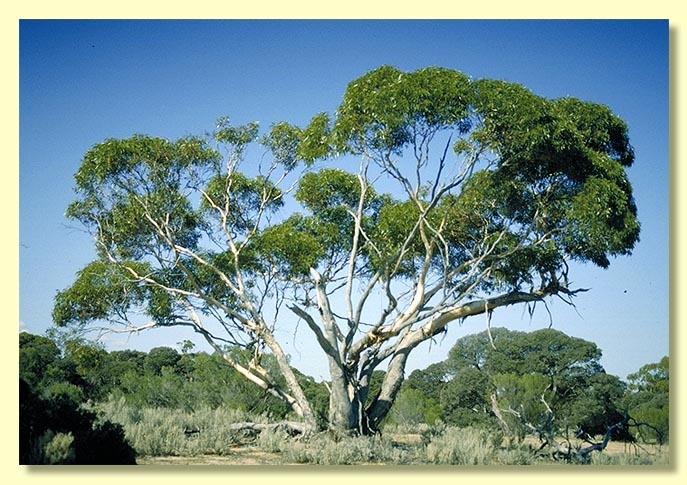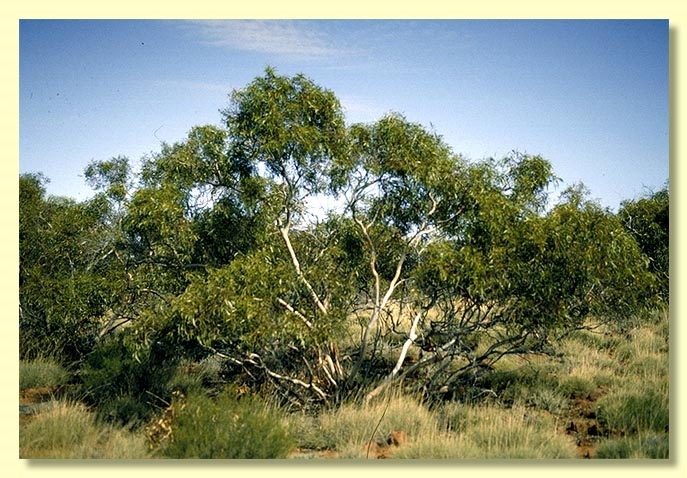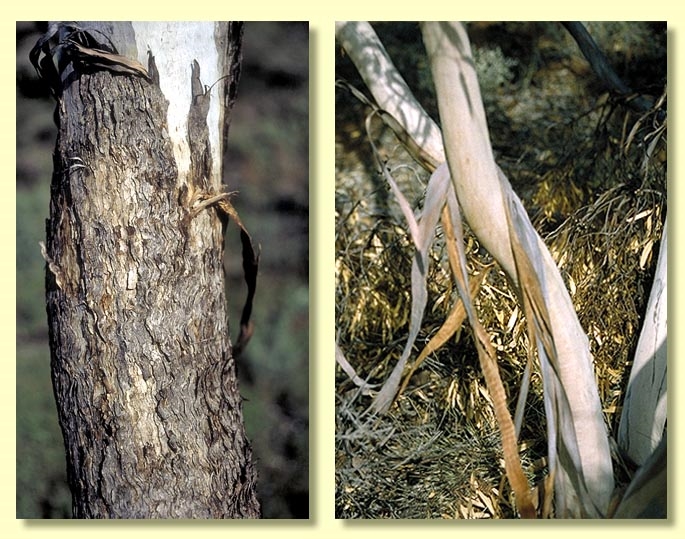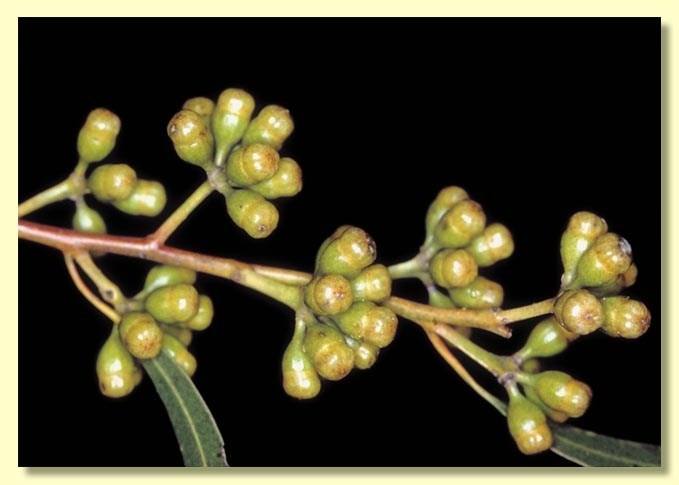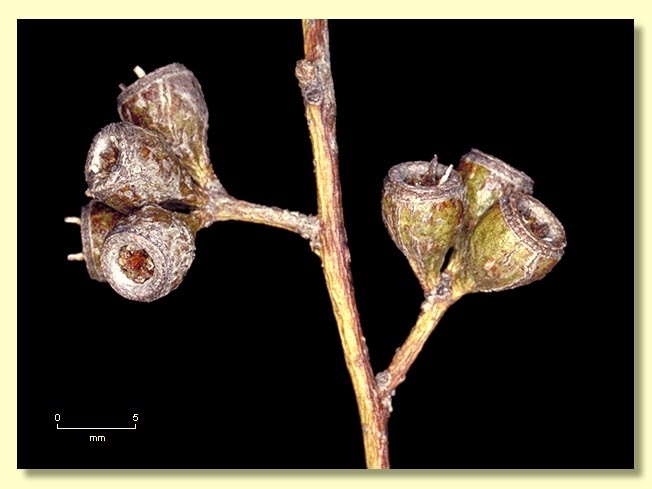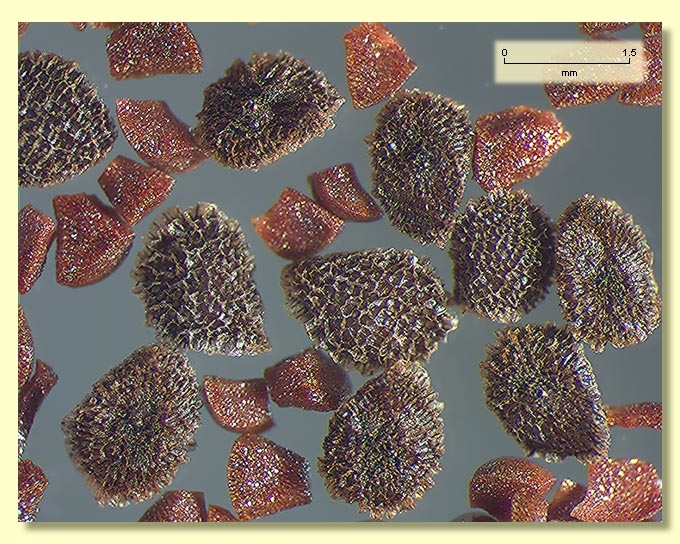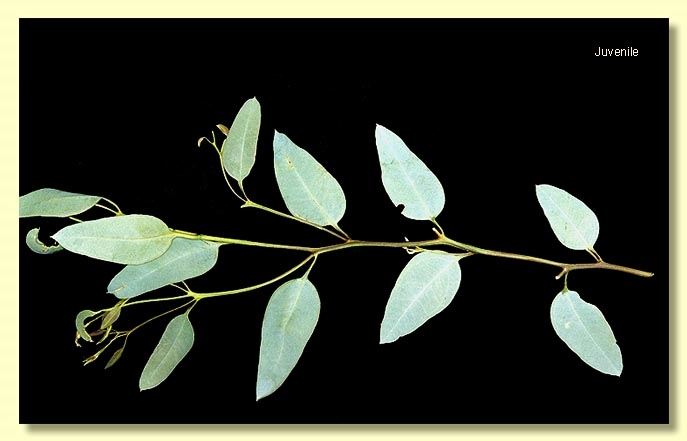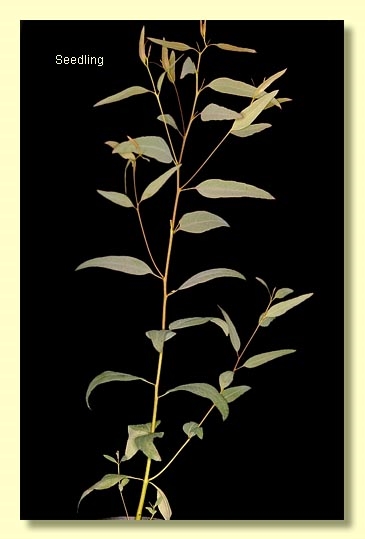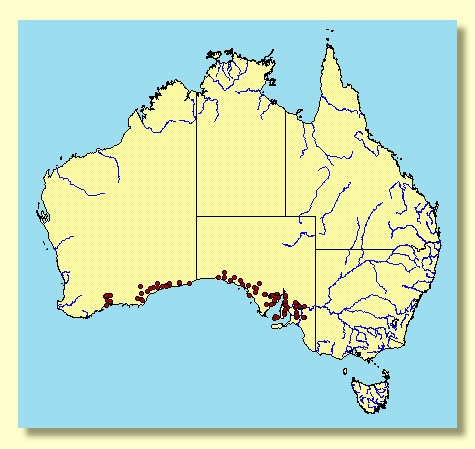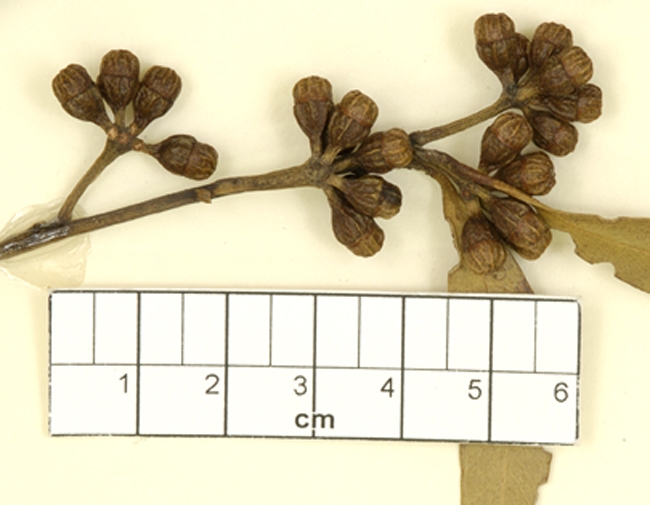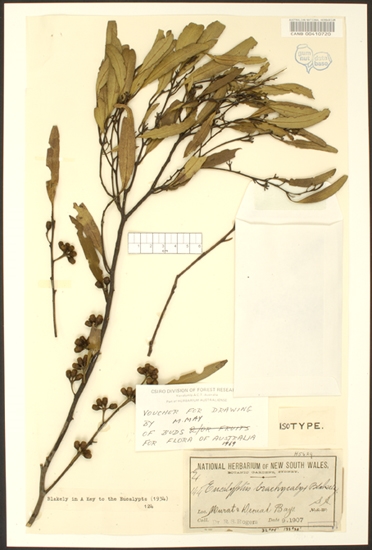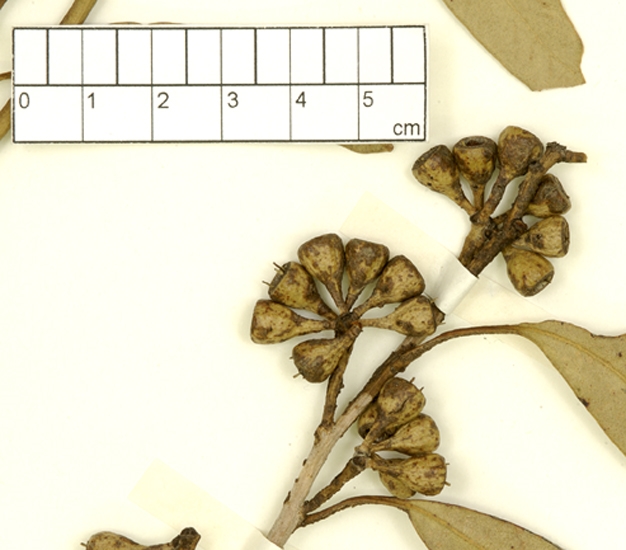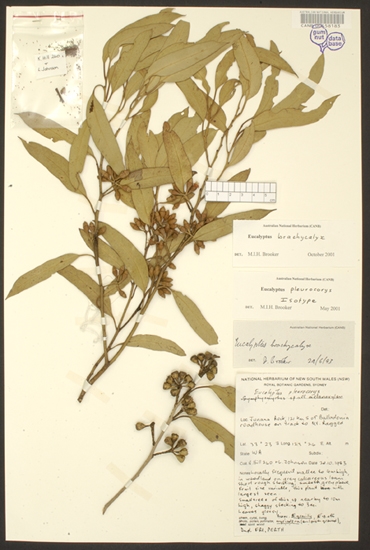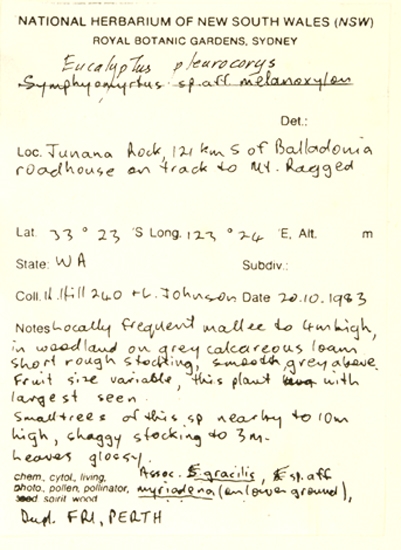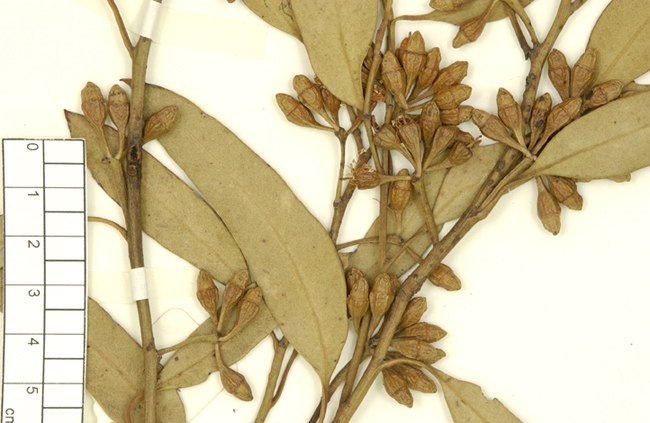Euclid - Online edition
Eucalyptus brachycalyx
Eucalyptus | Symphyomyrtus | Dumaria | Corrugatae
E. brachycalyx var. chindoo Blakely, Key Eucalypts 119 (1934).
T: Minnipa, S.A., May 1916, W.J.Spafford s.n.; holo: NSW ; iso: AD.
E. pleurocorys L.A.S.Johnson & K.D.Hill, Telopea 9: 277 (2001).
T: Western Australia, Junana Rock, 121 km S of Balladonia roadhouse on track to Mt Ragged (33°23'S, 123°24'E), 20 Oct. 1983, K.D.Hill 240 & L.A.S.Johnson; holo: NSW; iso: CANB, PERTH.
Small tree to 10 m tall, or mallee to 4 m tall. Forming a lignotuber.
Bark of trees fibrous and fissured yellow-brown to dark grey on part or all of trunk with branches smooth grey, brown, orange or pinkish to white. In mallees stems are smooth except for a short stocking of rough bark; the upper stems and branches may be ribbony.
Branchlets with oil glands in the pith.
Juvenile growth (coppice or field seedlings to 50 cm): stems square in cross-section; juvenile leaves always petiolate, opposite for 3 to 6 pairs then alternate, lanceolate, 3.5–8.2 cm long, 1–3.8 cm wide, grey-green to blue-green (not waxy), becoming green, glossy when ca 1 m tall.
Adult leaves alternate, petiole 0.5–2 cm long; blade narrowly lanceolate, 5–11 cm long, 0.5–2 cm wide, base tapering to petiole, concolorous, glossy, green, side-veins usually greater than 45° to midrib, densely to very densely reticulate, intramarginal vein parallel to and just within margin, oil glands mostly intersectional.
Inflorescence axillary unbranched, peduncles 0.4–1.5 cm long, buds 7, 9 or 11 per umbel, normally pedicellate, rarely sessile, pedicels (0)0.1–0.5 cm long. Mature buds ovoid to oblong or pyriform (0.5–1 cm long, 0.3–0.6 cm wide), green to yellow to reddish brown, smooth or longitudinally striate, scar present, operculum rounded to conical to flattened turban-shaped (0.2–0.4 cm long), narrower than hypanthium at the join, stamens inflexed, anthers cuboid or cuneate, versatile, dorsifixed, dehiscing by longitudinal slits (non-confluent), style long, stigma blunt, locules 3 or 4, the placentae each with 4 vertical ovule rows. Flowers white.
Fruit normally pedicellate, rarely sessile, pedicels (0)0.1–0.5 cm long, cup-shaped, obconical, hemispherical or barrel-shaped, 0.4–0.8 cm long, 0.5–0.8 cm wide, often ribbed longitudinally, disc level to descending, valves 3 or 4, exserted or near rim level.
Seeds grey to brown, 1–2.5 mm long, flattened-ovoid with surface pitted, hilum ventral.
Cultivated seedlings (measured at ca node 10): cotyledons reniform; stems square becoming rounded in cross-section, rarely slightly glaucous; leaves always petiolate, opposite for 3 to 6 nodes then alternate, ovate to lanceolate, 5–10 cm long, 1.5–3.5 cm wide, dull, grey-green to green, rarely slightly glaucous.
Flowering has been recorded in January, February, March, April, October, November and December.
A mallee or small tree occurring along the south coast of Western Australia eastwards from the Ravensthorpe – Hamersley Inlet area to Eyre Peninsula and western part of the Murray Mallee of South Australia. The bark is rough over most of the stems or trunk. The adult leaves are narrow and glossy green.
Eucalyptus brachycalyx belongs in Eucalyptus subgenus Symphyomyrtus section Dumaria because the buds have two opercula, stamens are strongly inflexed, ovules are in four rows on the placentae and cotyledons are reniform. Within this larger grouping E. brachycalyx and six other species — E. melanoxylon, E. concinna, E. corrugata, E. griffithsii, E. rugosa and E. laevis — form a sub-group called series Corrugatae, all with flattened-ovoid, conspicuously pitted seeds and with dark brown oil glands in the pith of the branchlets. Of these E. brachycalyx is the most widespread. Its longitudinally striate bluntly conical opercula and cupular to barrel-shaped fruit distinguish it from E. melanoxylon, whilst the South Australian coastal species E. rugosa has blunt opercula and smooth bark. E. concinna, a rough-barked desert dweller, has generally larger buds that are usually flat-topped. E. griffithsii and E. corrugata are the only species in the series to have three-budded inflorescences, the buds being much larger than those of the other species.
Confusion with E. oleosa is common, especially on the Eyre Peninsula, when the operculum of E. brachycalyx is narrower than the hypanthium at the join, but E. brachycalyx is easily distinguished by the presence of pith glands and large cuboid-cuneate anthers. Another quick way to recognise the species of this series is to see if the valve-tips (style remnants) of the dehisced fruit are turned outwards radially, not more or less erect as in, for example, E. oleosa.
The recently described species E. pleurocorys from coastal areas of Western Australia from near Caiguna to Mt Ragged and also further to the west in the Hopetoun area is regarded here as synonymous with E. brachycalyx.

